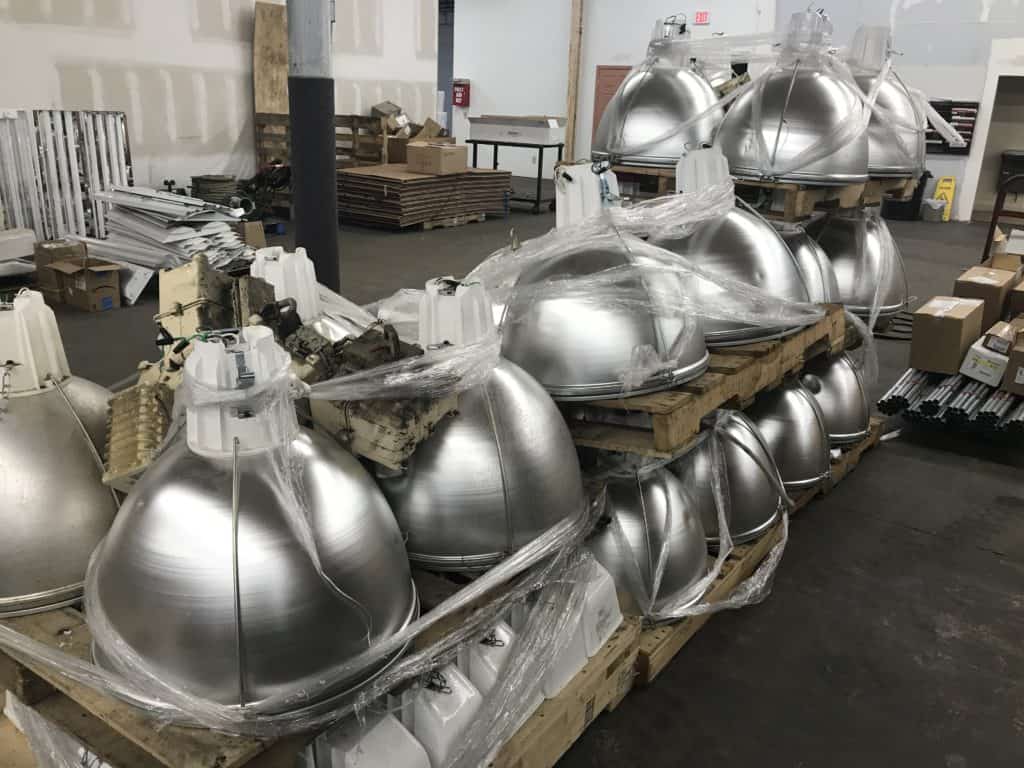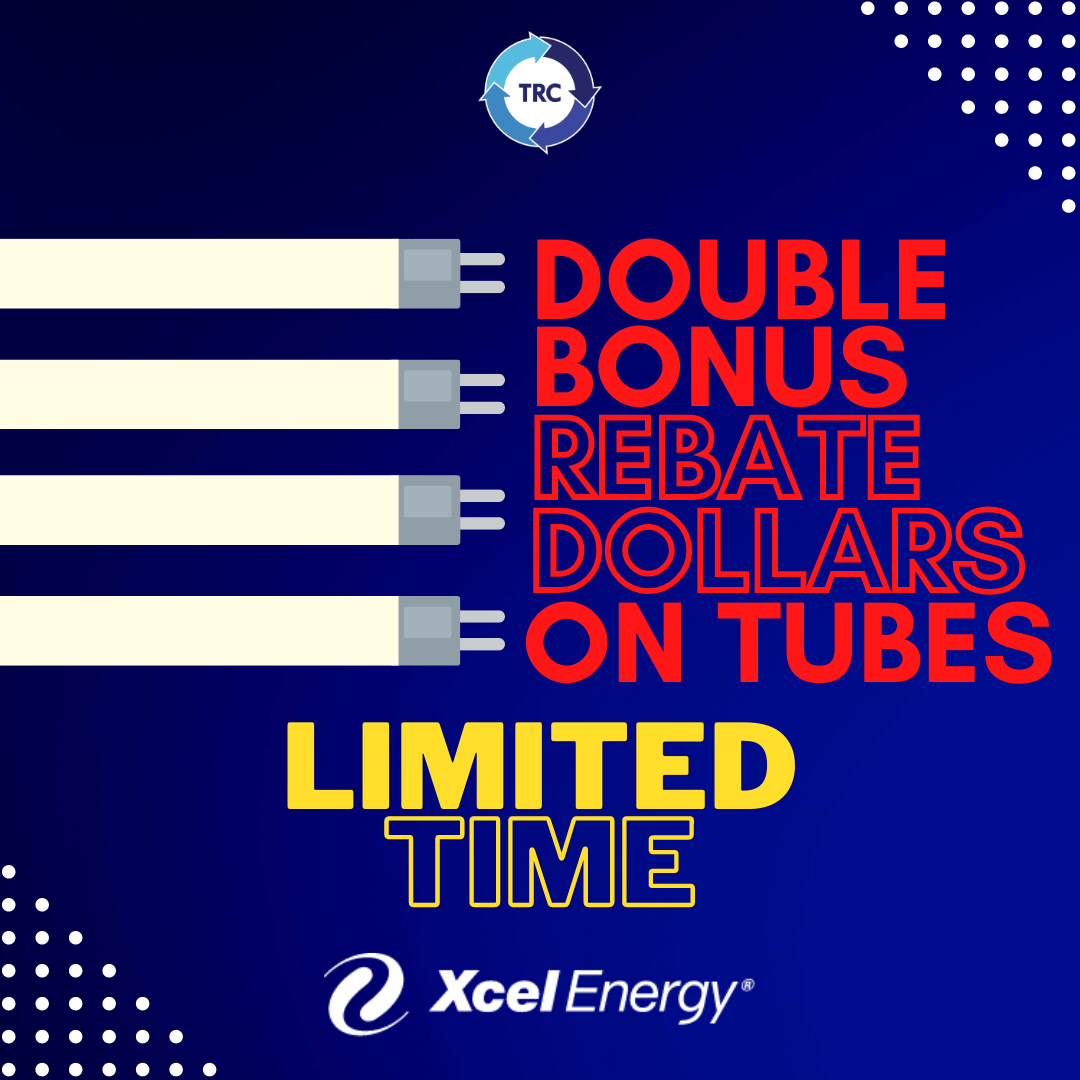Why Should You Replace Your Metal Halides with LED Lights?
Published November 2022

Metal halide bulbs removed from a warehouse during a lighting retrofit to LED bulbs.
There is a multitude of benefits to switching out your problematic metal halides. Making the switch from metal halides to LED can create substantial energy savings and improved light quality!
LED uses up to 75% less electricity than metal halide bulbs.
National LED
There are many drawbacks to having metal halide bulbs in your gym, warehouse, school, etc. Metal halides require a long warm-up period before reaching full brightness. Metal halides have one of the longest warm-up times out of all light sources, lasting around 20 minutes. The halides also produce a lot of heat, which can become troublesome in high-heat areas. On the other hand, LED bulbs will turn on to full brightness immediately and not cause additional heat.
Metal halides also have a shorter lifespan than LED lights. Metal halide bulbs usually produce around 15,000 lumens, while LED bulbs can produce around 20,000 to 30,000 lumens. An LED bulb has a lifespan of 50,000 hours or more. While metal halide bulbs may have a lower upfront cost, they will need to be replaced more often. This will lead to higher operating costs in the long run. LED bulbs are much more energy efficient than metal halides and will save you money on your monthly energy bill. Regarding light quality, LED allows for more light control, while metal halides have poor light distribution and increased glare.
The upfront cost of an LED retrofit can seem unfeasible to many businesses. However, you can make back your initial investment through the energy costs saved by using LED lights! You also will have to switch out your lights less often due to the long lifespan of LED bulbs. On top of all that, LED will increase the light quality in your building for your employees and customers!
- In the news – TRC Owner, Wendy Fry, featured in MN Electrical Association’s Member Spotlight
- Retrofit Environmental is hiring a Hazmat Driver!
- Retrofit Environmental is hiring a Warehouse Associate/Back-up Driver
- Retrofit Electric’s Lighting Team Featured in LM&M Magazine!
- Driver needed at Retrofit Environmental – $3,000 Bonus!


